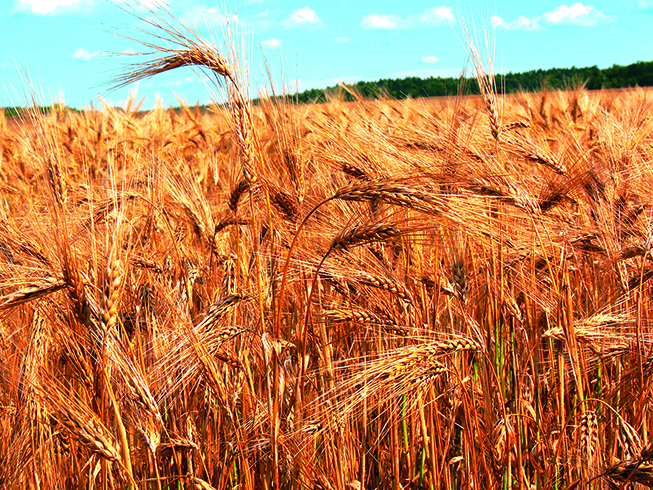Scientists at Essex University and researchers at Rothamsted Research and Lancaster University have developed wheat plants which can carry out photosynthesis more efficiently – the process that enables plants to harvest energy from the sun and convert it to products for food and fuel.
Rothamsted Research has sent an application to DEFRA for permission to carry out GM field trials on the Rothamsted farm in 2017 and 2018. The trial will evaluate the performance of the engineered plants in the field.
Ensuring food security is a big challenge given the need to increase world food production by 40% in the next 20 years and 70% by 2050. Wheat is one of the main grain crops worldwide and provides about one fifth of the total calories consumed globally. However, wheat yields have reached a plateau in recent years and predictions are that yield gains will not reach the level required to feed the nine billion population predicted for 2050. Traditional breeding and agronomic approaches have maximised light capture and allocation to the grain. A promising but as yet-unexploited route to increase wheat yields is to improve the efficiency by which energy in the form of light is converted to wheat biomass.
Professor Christine Raines, head of the School of Biological Sciences at Essex and principal investigator for this research project, said: “The efficiency of photosynthesis integrated over the season is the main determinant of crop yield. However, to date photosynthesis has not been used to select for high yielding crops in conventional breeding programmes and represents an unexploited opportunity. But there is now evidence that improving the efficiency of photosynthesis by genetic modification is one of the promising approaches to achieve higher wheat yields.”
She added: “In this project we have genetically modified wheat plants to increase the efficiency of the conversion of energy from sunlight into biomass. We have shown that these plants carry out photosynthesis more efficiently in glasshouse conditions. One of the steps in photosynthesis shown to limit this process is carried out by the enzyme. sedoheptulose-1,7-biphosphatase (SBPase). We have engineered GM wheat plants to produce increased levels of SBPase by introducing a SPBase gene from brachypodium distachyon – whose common name is stiff brome – a plant species related to wheat and used as a model in laboratory experiments.”
The proposed experiment is funded by the Biotechnology and Biological Sciences Research Council and United States Department of Agriculture as part of the International Wheat Yield Partnership activities.
Dr Malcolm Hawkesford, head of the plant biology and crop science department at Rothamsted Research and lead scientist at Rothamsted for this trial, said: “If we are granted permission to perform a controlled experiment in our already established facilities here it will be a significant step forward. We will be able to assess in ‘real environmental conditions’ the potential of these plants to ultimately produce more using the same resources and land area as their non GM counterparts.” He added that Rothamsted will provide any further information to inform public debate about the ongoing consultation which DEFRA is running on the trial.




